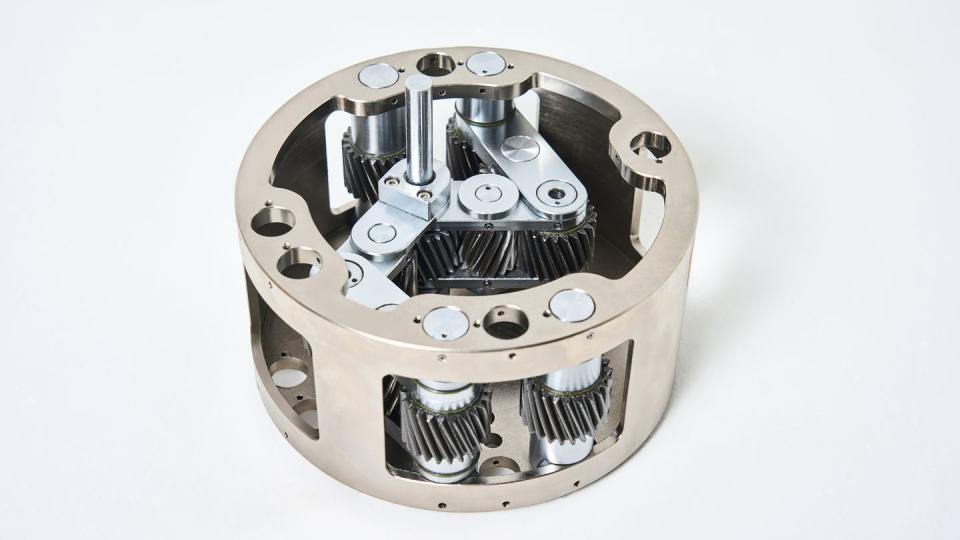Hyundai and Kia Ponder New ‘Uni Wheel’ Drive System

Hyundai and Kia are showing off a new vehicle drivetrain system called the “Universal Drive System” or “Uni Wheel.”
The two automakers are hoping this drive system will help solve packaging issues with electric vehicles.
This “Uni Wheel” system also aims to improve upon the efficiency of constant velocity axles.
Hyundai and Kia are hoping to move gear reduction into your EV’s wheel hubs with its new Universal Drive System. This technology should help the folks at Hyundai and Kia better package their electric offerings and make for a more efficient driveline in the process. This system could also make its way to other mobility solutions like wheelchairs, bicycles, or wheeled robots.
Okay, so let’s get this out of the way first: gear reduction in hubs isn’t exactly a new idea. Portal axles have helped off-road vehicles overcome obstacles and help powertrains squeeze more torque through the magic of gear reduction. While portal axles have existed for over a century, this Uni Wheel system is solving a slightly different problem.
Instead of moving the vehicle up, Hyundai and Kia engineers are hoping to move the gear reduction from their EV motors out. Instead of packing a set of constant velocity axles and a simple gear-reduction transmission underneath the car, the Uni Wheel will move most of that hardware into the hub.
Of course, there will still be a shaft to connect the motor to the Uni Wheel system. Unlike a traditional constant velocity axle, the Uni Wheel system offers similar articulation through its flexible planetary gearset inside the hub.

The sun gear at the center of this gearset can move thanks to its interlinked design. This helps keep wheel articulation without too much deflection. According to Hyundai, CV axles will become more inefficient the more they have to deflect. This could help to squeeze a few more miles out of current lithium-ion battery technology.
Of course, the most important aspect of this system is probably how it affects driveline packaging. According to Hyundai, this system would help make more interior space available to the vehicle. That makes sense when you consider the space that even EV transmissions and axles take up underneath the car. This system would also let automakers move the axle closer to the wheel, which would further help packaging.
According to Hyundai and Kia, this drive system could even make its way to wheelchairs, bikes, or anything with wheels that sports an electric motor. However, time will tell if Hyundai and Kia start stuffing this drive system into the hubs of their cars and how it works on public roadways.
Do you think this hub system makes sense? Or is the added complexity not worth the better packaging? Tell us your thoughts below.

 Yahoo Autos
Yahoo Autos 